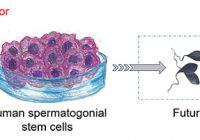Grünenthal and King’s College London collaborate to develop human induced pluripotent stem cell-based microfluidic cultures for pain research
• Dr Ramin Raouf from King’s College London and Grünenthal strive to develop reliable microfluidic culture models relevant for pain research based on human induced pluripotent stem cell-derived neurons• Grünenthal has expertise in developing human induced pluripotent stem cells towards sensory neurones and will support the lab of Dr Raouf with a total consideration of… Read More »



